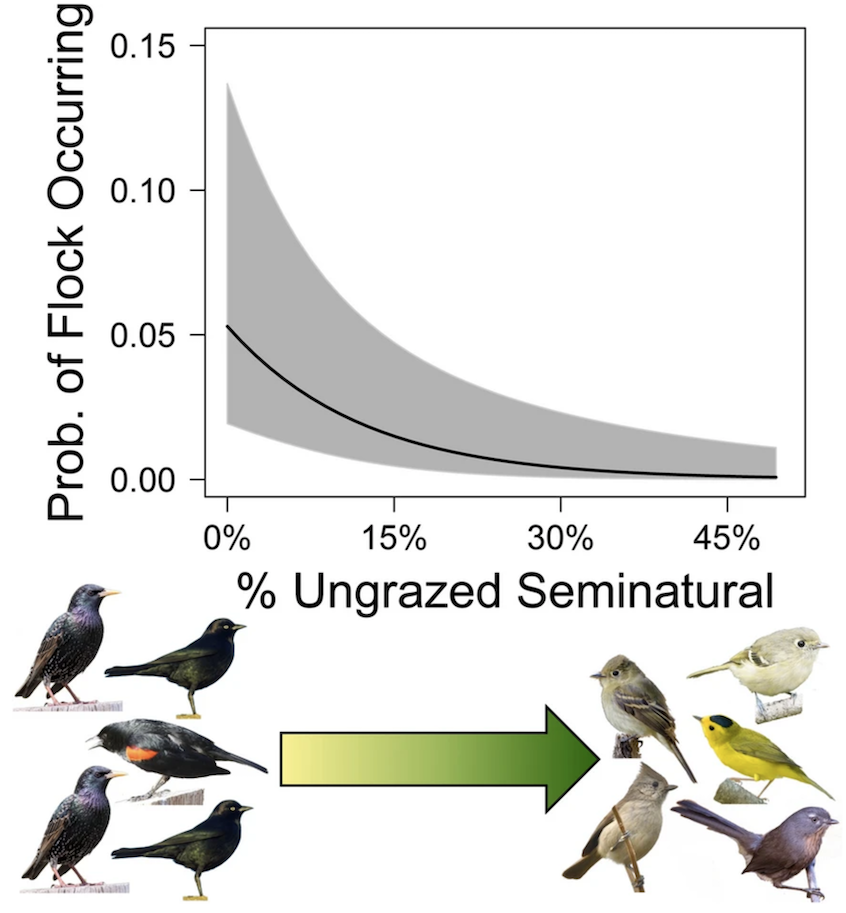
Fig 4. Effect of ungrazed seminatural habitat surrounding farms (within a 1 km radius) on the probability of observing flocks of 7 birds or more in crop fields. Flocks were most likely to occur on farms surrounded by low amounts of ungrazed seminatural habitat. As community composition shifts in response to increasing ungrazed seminatural habitat (Fig. 2B), flocking species (depicted as European starling, Brewer’s blackbird, and red-winged blackbird) are replaced by species of higher conservation value (Pacific-slope flycatcher, oak titmouse, Hutton’s vireo, Wilson’s warbler, and wrentit icons; Table S4-7, Fig. S2/7). The solid black line and gray band correspond to predictions and 95% confidence regions from the top mixed model
Abstract
Context - Conservation in working landscapes is critical for halting biodiversity declines and ensuring farming system sustainability. However, concerns that wildlife may carry foodborne pathogens has created pressure on farmers to remove habitat and reduce biodiversity, undermining farmland conservation. Nonetheless, simplified farming landscapes may host bird communities that carry higher foodborne disease risks.
Objectives - We analyzed the effects of local farming practices and surrounding landscapes on bird communities and food-safety risks across 30 California lettuce farms. Specifically, we sought to determine how farmland diversification affects bird diversity, fecal contamination, and foodborne pathogen incidences, thereby identifying potential tradeoffs between managing farms for bird conservation versus food safety.
Methods - We surveyed birds at 227 point-count locations, quantified fecal contamination along 120 transects, and assayed 601 bird feces for pathogenic E. coli, Campylobacter spp., and Salmonella spp. We then used hierarchical models to quantify effects of farm management and landscape context on bird communities and food-safety risks.
Results - Surrounding ungrazed seminatural areas were associated with higher bird diversity, more species of conservation concern, and fewer flocks that may increase risks from foodborne pathogens. In contrast, on-farm diversification practices and surrounding grazing lands offered weaker bird conservation benefits. Surrounding grazed lands were associated with more potentially pathogenic bird feces in crop fields.
Conclusions - Our results suggest that habitat conservation around produce farms could support bird conservation without increasing foodborne pathogens, especially on farms further from grazing lands. Thus, interventions that diversify farming systems offer potential to simultaneously conserve biodiversity and provide safe food for human consumption.